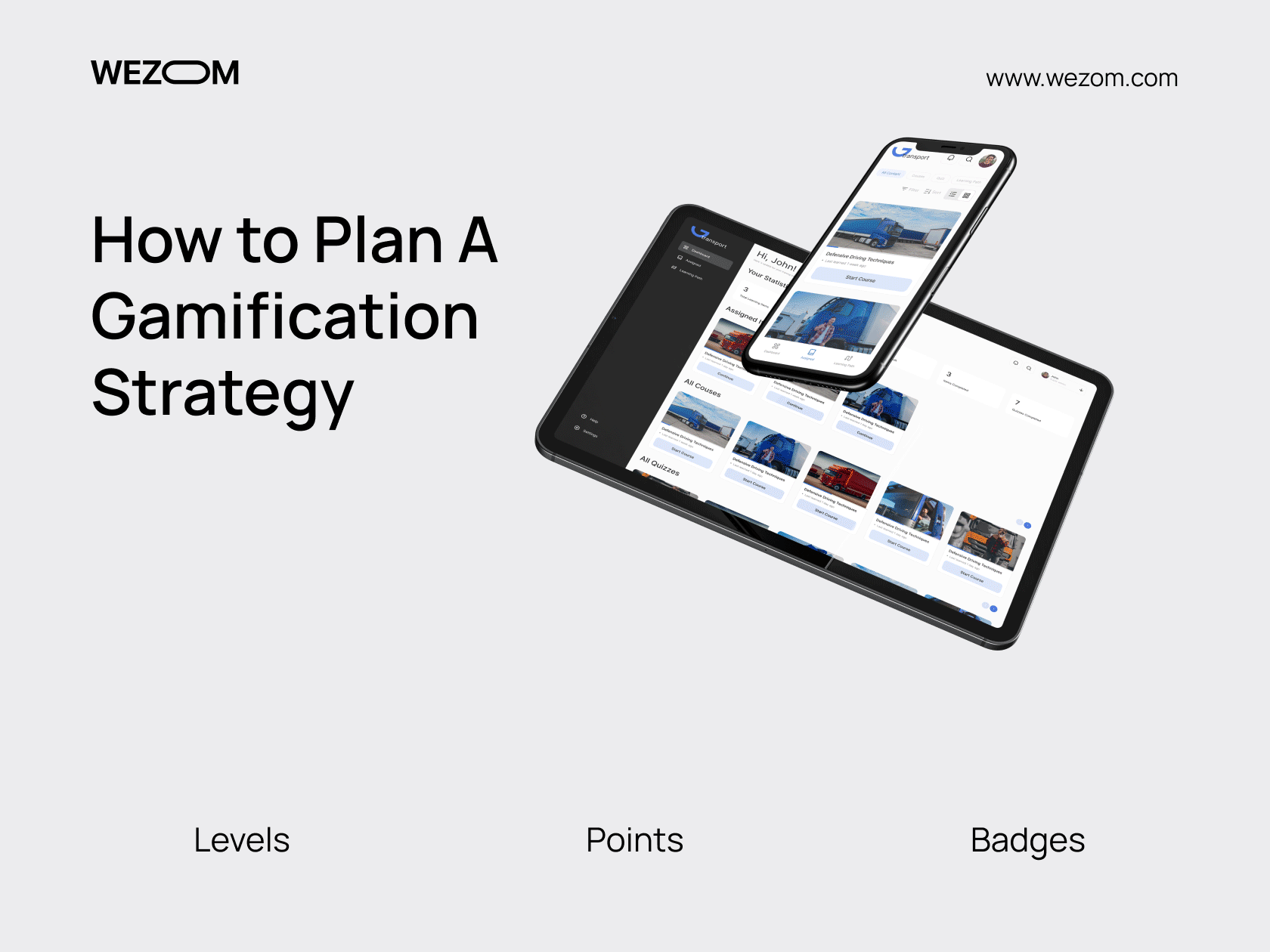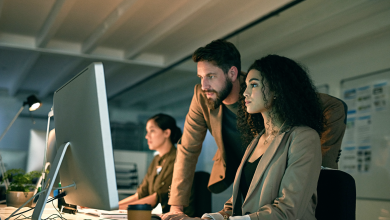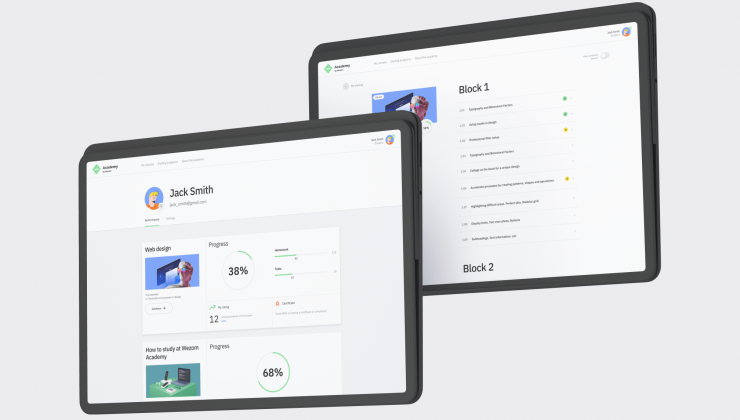After the global transformation of the education sector caused by the COVID-19 pandemic, many educational organizations and companies have been forced to go online to continue their learning processes. At the same time, eLearning required fundamentally new ideas and methods.
In particular, this was about keeping students' attention and motivating them, which was difficult to achieve using traditional approaches (like transferring the knowledge base to a centralized digital repository and using popular video conferencing tools such as Zoom and Skype). The approach that helped achieve the former indicators of focusing on the subject and striving for better academic results was gamification.
Already in 2020, the gamification market size had a global value of $9,1 billion, and it is predicted to reach $30,7 billion by 2025. The primary target audience of such solutions is the corporate sector, forming a growth rate of 47,5%.
So what about your goals? Do you want to unlock the full potential of your eLearning journey with gamification - one of the most interesting features of LMS (modern Learning Management System)? Or, maybe, would you like to find out how to use gamification in eLearning? So buckle up and get ready to level up your understanding of gamification in education like never before!
What Is Gamification?
Are you searching online for “learning management system gamification” and ways to implement it in your learning course? Let’s begin with the basics and define the meaning of this term. Gamification is an innovative educational approach that uses elements from games (like points, badges, leaderboards, and rewards) to non-game contexts, such as learning environments. This way, gamification aims to enhance engagement, motivation, and overall learning outcomes.
The main goal of this technique is to transform the learning experience into an interactive and immersive journey where students are active participants rather than passive recipients of information. Overall, that’s a superb chance to delve into the process and understand the material better.

Examples of Gamification in Everyday Life
According to this statistics, challenge-based gamification in education leads to an increase of 34.75% in student performance. Looks great, doesn’t it?
So what about gamification examples in education? In fact, gamification is widely used daily, and you may not even notice it. The most vivid example is a language-learning application. Its main goal is to turn language acquisition into a playful adventure with interactive challenges and progress tracking. As a result, it is easier to get new knowledge for students, and the whole process turns out to be more effective.
eLearning Gamification: Top Implementation Strategies
eLearning gamification is a dynamic and practical approach to online education that uses various gaming elements. Incorporating features such as points, levels, challenges, and rewards can significantly improve learner motivation and knowledge retention.
Students are encouraged to actively participate, compete, and progress through the course content, transforming traditional lectures into interactive and immersive experiences. Moreover, an LMS with gamification can transform learners into enthusiastic participants in their quest for knowledge.
Here are two effective ways to embed gamification in your eLearning content:
Realistic Sales Simulations Infused with Game Dynamics
This strategy combines scenario-based learning with game mechanics, creating a relatable environment for sales teams. Learners navigate through lifelike sales situations, honing their skills and decision-making abilities.
Why it’s Effective:
- The competitive spirit induced by the game elements resonates with the fast-paced sales environment.
- The immersion is heightened when learners don't merely control a character but become one, making the learning experience more authentic.
- Such simulations offer a cost-effective means to incorporate gamification in training modules.
Interactive Product Knowledge Quizzes
Incorporating playful elements in corporate eLearning improves engagement. Game-oriented product knowledge quizzes, for example, can effectively gauge a learner's grasp. Here, participants delve into a quiz, earning badges and acknowledgments as they advance.
Why it’s Effective:
- Varied question rounds accentuate difficulty levels, ensuring comprehensive learning.
- Incentivizing correct application of skills ensures that the content is ingrained in the learner’s memory.
- The pressure-cooker scenarios mirror real-life situations, aiding in better retention.
Integrating these gamification strategies within your eLearning modules can significantly elevate learners' experience, making it more interactive and outcome-driven. As demonstrated in the above examples, such game-like features not only make learning enjoyable but also reinforce positive behaviors, promoting continual learning.
Gamification Components in eLearning
Now, let’s take a closer look at the main components of a gamification system:
- Badges: These are awards users get once they complete this or that task or activity.
- Points: The main goal of these components is to mark progress or achievements. A learner needs to gather points to reach a new level.
- Levels: They represent milestones or stages of progress that learners attain as they accumulate points or complete specific tasks.
- Leaderboards: The main goal of these boards is to demonstrate progression and engagement in online learning.
For example, recently, we have built a comprehensive learning management system for a transportation company with a large staff of over 1,000 drivers. It was aimed at skilling up drivers to keep their workflows in full correspondence with strict standards and regulations. Initially, the client placed all the training materials on Google Drive. However, they were not conveniently organized, so our main task was to organize them and involve drivers in the educational process.
As a result of our collaboration, we built an employee training system consisting of the following components:
- Module for management and reporting;
- Mobile app for driver training with elements of gamification;
- Connections with third-party systems, including video recorders, HR, scorecards, etc.
After its deployment, the client’s staff turnover decreased by 30%.
Benefits of Gamification for eLearning
Let’s dive deeper into the main advantages of gamification.
Increases motivation to learn
By introducing game-like elements listed above, students are naturally inclined to participate actively and immerse themselves in the learning process. Thus, it turns from a boring and resource-intensive activity into a kind of game in which students need to get achievements and reach new levels.
Improves your e-learning content’s user experience
Traditional educational methods sometimes feel monotonous and uninspiring, leading to decreased retention. However, gamification adds a layer of excitement and interactivity, turning what could be perceived as dry material into a captivating adventure. In particular, instead of sections typical for ordinary textbooks, you can create a kind of levels, for the achievement of which each of the students will have to compete with their classmates.
As a particular example of this benefit, let’s consider our personal case study – WEZOM Academy. Our team developed its own educational program for remote training of future coders, designers, testers, managers, and other digital specialists. This gamified platform speeded up studying processes by motivating already enrolled students (the number of students who complete all their homework has increased by 76%) and attracting new ones (the rates of course sales increased by 37%, and the rate of completion of courses to the end has increased by 48%).
More fun
More fun is undeniably one of the most significant benefits of gamification for eLearning. Infusing educational content with game-like features makes the user experience entertaining, enticing, and enjoyable. For example, as part of an educational platform, you can create a virtual assistant, such as in the case of the owl from Duolingo. However, this is not a universal recommendation and is not appropriate for all educational solutions.
How to Plan A Gamification Strategy
Creating a successful gamification strategy that fits the needs of your project takes work. The thing is that it’s really hard to find only one solution that fits the needs of everyone. Therefore, you should experiment with gamification to find the best option for your target audience. Let’s examine a few ways to implement its key components.

Levels
Start by defining a clear hierarchy of levels, each representing a specific skill level or knowledge milestone. In general, this may resemble the creation of a full-fledged textbook, divided into chapters and sections. To make the level system even more compelling, consider assigning unique names or themes to each level, tying them to the subject matter or the overall learning narrative. Also, make new levels unavailable to students who have not completed tasks that confirm their knowledge at previous levels.
Points
Users receive these gamification elements after completing assignments, quizzes, or other activities. If you want to make the most out of them, ensure that learners can accumulate points consistently and that they align with the task's effort or complexity. You can also specify the maximum number of points that can be obtained for completing tasks (for example, you can use progress bars like Udemy) – this will become an additional driving force for students who often do their work without proper diligence. And of course, it is unlikely that your students will want to be at the bottom of the ranking due to an insufficient number of points, leaving their classmates ahead. All this is achievable through the implementation of public leaderboards.
Badges
Finally, you can develop several categories of badges representing different achievements or expertise levels. For instance, learners can earn "Beginner," "Intermediate," and "Advanced" badges based on their performance and knowledge. The same approach was implemented in a BitDegree app.
Will Gamification Work with My Business Goals?
Overall, gamification is not a one-size-fits-all solution for every business. So how can you determine if gamification suits your business goals?
First of all, you should assess your target audience, the nature of your products or services, your desired outcomes, etc. In particular, the main problem of gamification can be cognitive dissonance that can occur in people who experience it: the fact is that if education is mandatory (for example, it is used to re-certify employees, some of which can be fired if do not pass the exam), it will only cause additional annoyance and thoughts like "Why are we forced to do obligatory things pretending that this can be fun?"
Therefore, if you are a newbie in this area, seeking expert advice can be invaluable. At Wezom, our professionals can provide insights and guidance tailored to your business needs. We have over ten years of field experience creating online courses for students that want to study remotely. So, we will analyze your specific goals and help you decide if gamification aligns with your business goals!


